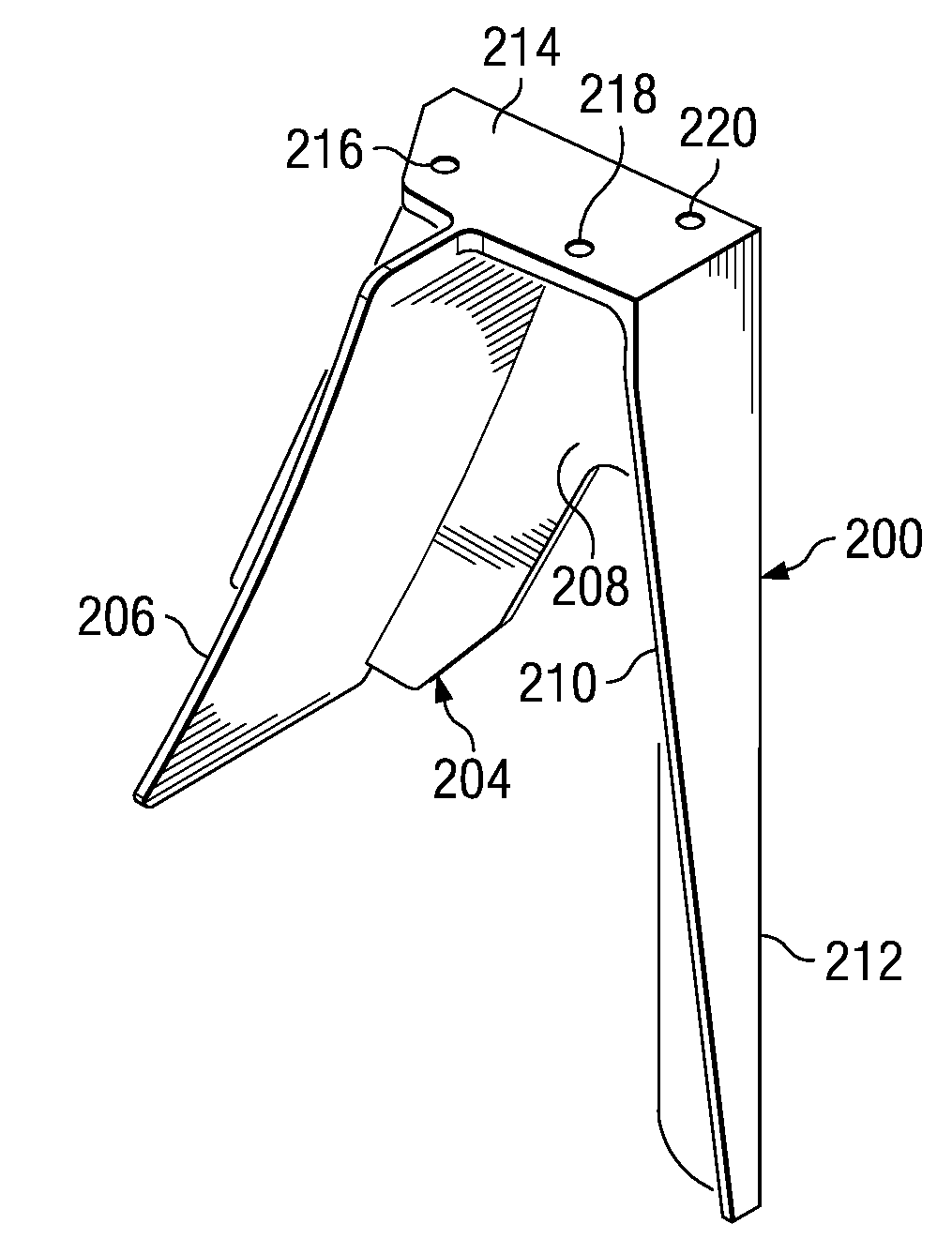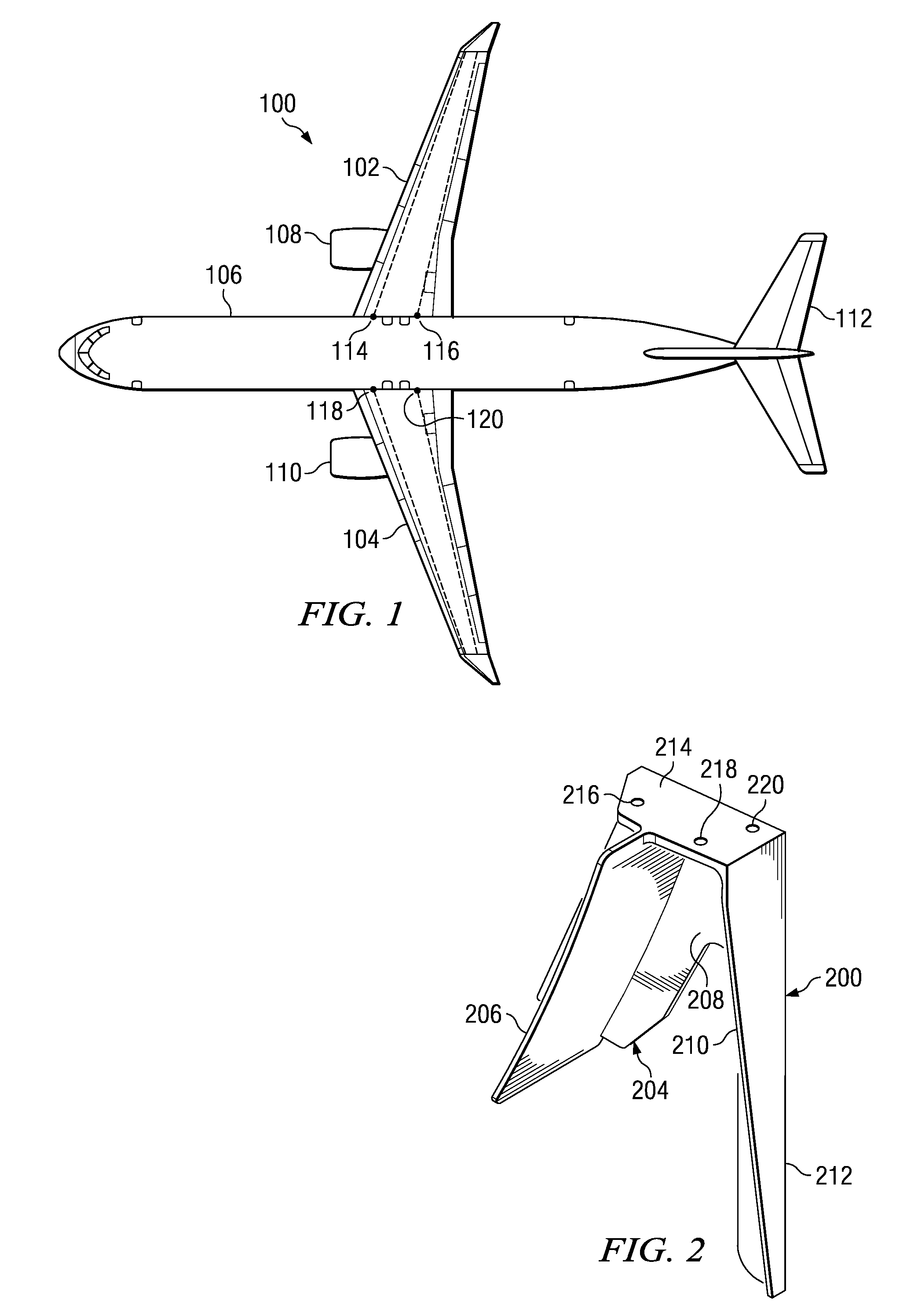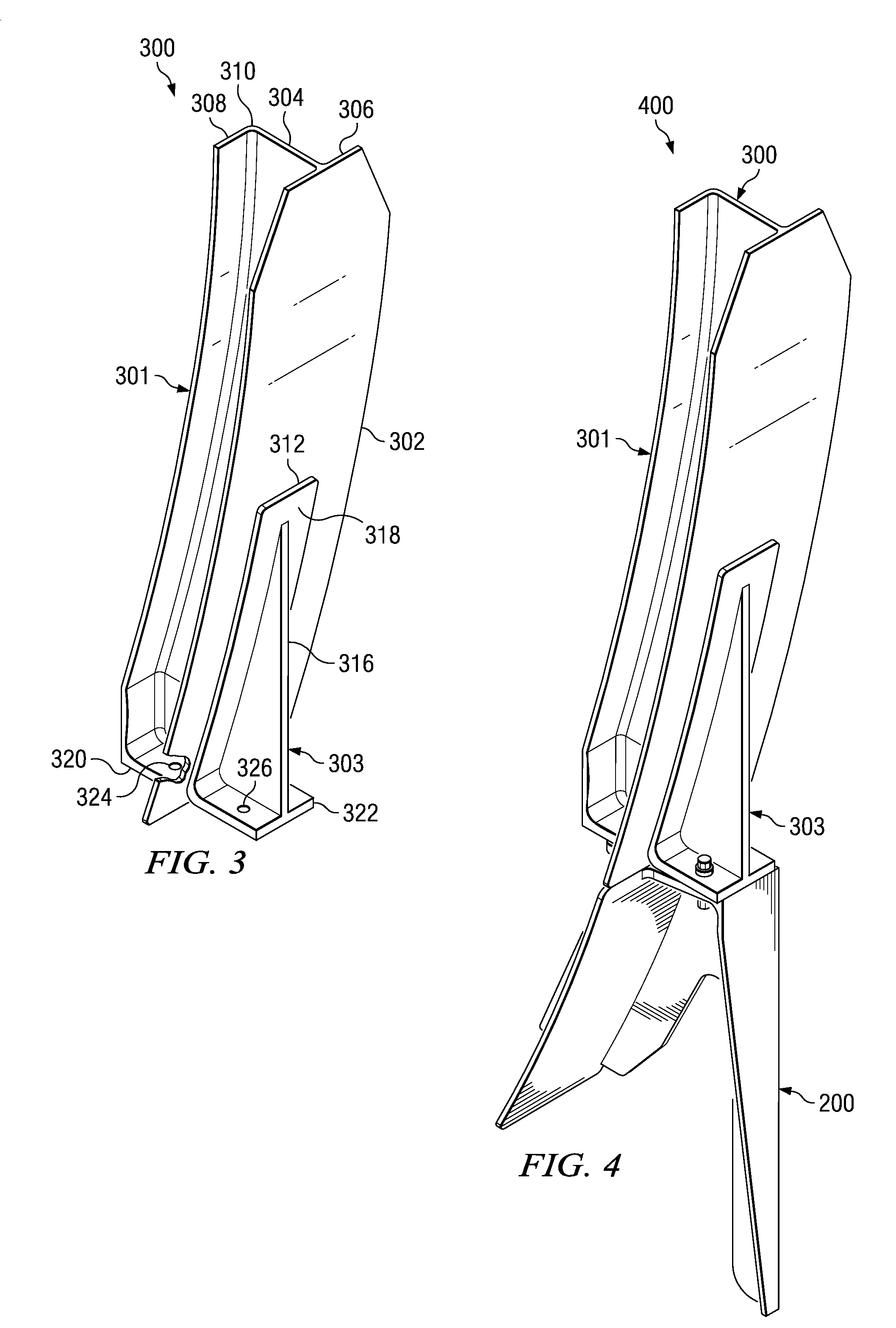Method and apparatus for attaching a wing to a body
a technology for attaching wings and aircraft, which is applied in the field of aircraft, can solve the problems of contributing to high inventory holding costs, and high cost of aircraft components, and achieves the effects of reducing the weight of the aircraft, reducing the cost of aircraft parts, and reducing the number of aircra
- Summary
- Abstract
- Description
- Claims
- Application Information
AI Technical Summary
Problems solved by technology
Method used
Image
Examples
Embodiment Construction
[0043]With reference now to the figures, and in particular, with reference to FIG. 1, a diagram of an aircraft is depicted in which an advantageous embodiment the present invention may be implemented. Aircraft 100 is an example of an aircraft in which a method and apparatus for attaching a wing to a body may be implemented. In this illustrative example, aircraft 100 has wings 102 and 104 attached to body 106. Aircraft 100 includes wing mounted engine 108, wing mounted engine 110, and tail 112.
[0044]In particular, the different advantageous embodiments may be used to connect structural components in wings 102 and 104 to structural components in body 106. For example, the different advantageous embodiments may be used in wing spar to body joints which may be located at points 114, 116, 118, and 120. These wing spar to body joints are used to attach the wing spars for wings 102 and 104 to a structural component in body 106.
[0045]Wing spars are structural components that are used to for...
PUM
 Login to View More
Login to View More Abstract
Description
Claims
Application Information
 Login to View More
Login to View More - R&D
- Intellectual Property
- Life Sciences
- Materials
- Tech Scout
- Unparalleled Data Quality
- Higher Quality Content
- 60% Fewer Hallucinations
Browse by: Latest US Patents, China's latest patents, Technical Efficacy Thesaurus, Application Domain, Technology Topic, Popular Technical Reports.
© 2025 PatSnap. All rights reserved.Legal|Privacy policy|Modern Slavery Act Transparency Statement|Sitemap|About US| Contact US: help@patsnap.com



